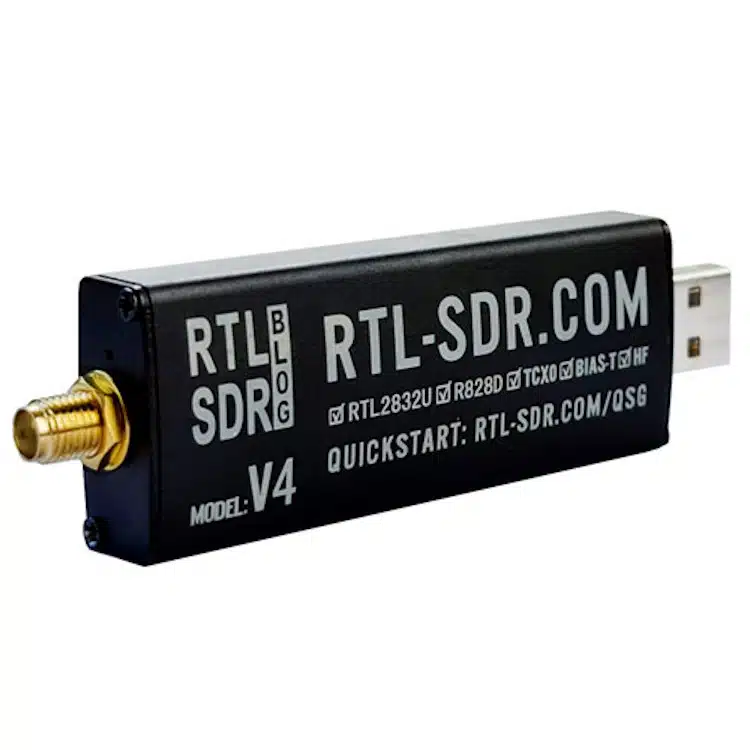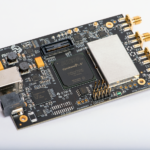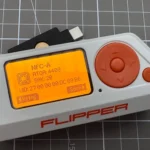The RTL-SDR V4 USB dongle is a versatile and cost-effective software-defined radio (SDR) device that has become an essential tool for both hobbyists and professionals in the field of radio frequency (RF) research and penetration testing. In this article, we’ll dive into the features of the RTL-SDR V4 USB, explore its capabilities in penetration testing, and provide examples of how it can be used in real-world scenarios.
What is the RTL-SDR V4 USB?
The RTL-SDR V4 USB is the latest iteration of the popular RTL-SDR dongle series. Originally designed as a digital TV tuner, this device has been repurposed by the security and hacking community as an affordable SDR receiver. The V4 version brings several enhancements over its predecessors, making it a more powerful and reliable option for RF analysis and penetration testing.
Key Features:
- Frequency Range: The RTL-SDR V4 covers a frequency range of 500 kHz to 1.75 GHz, allowing it to receive a wide variety of signals, including AM, FM, shortwave, and various digital modes.
- Direct Sampling Mode: Supports direct sampling for HF signals, making it easier to receive signals in the lower frequency ranges.
- Enhanced Sensitivity: Improved sensitivity and noise floor compared to earlier versions, providing better signal reception and clarity.
- TCXO (Temperature-Compensated Crystal Oscillator): Ensures stable frequency accuracy, crucial for precise signal analysis and demodulation.
- Bias-T: Integrated Bias-T power supply to power active antennas, making it more versatile for use with different antenna setups.
Uses of RTL-SDR V4 in Penetration Testing
The RTL-SDR V4 USB’s wide frequency range and low cost make it a valuable asset in the penetration tester’s toolkit. Here are some of the key uses of this device in the field of penetration testing:
1. Wi-Fi Reconnaissance and Passive Analysis
One of the most common uses of the RTL-SDR V4 in penetration testing is for passive reconnaissance of Wi-Fi networks. Although the RTL-SDR cannot directly transmit or inject packets, it can be used to monitor and analyze Wi-Fi signals in the 2.4 GHz band.
Example: Monitoring Wi-Fi Channels
You can use tools like rtl_433 or GQRX to monitor the 2.4 GHz Wi-Fi band and capture packets. This allows you to gather information about the active networks, such as SSIDs, MAC addresses, and channel usage.
# Install necessary tools sudo apt-get install rtl-sdr gqrx-sdr # Monitor Wi-Fi signals using GQRX gqrx
In GQRX, you can tune to specific Wi-Fi channels and observe the signal strength and activity. This information can be valuable for identifying potential targets or understanding the wireless environment during a penetration test.
2. Intercepting and Decoding RF Signals
The RTL-SDR V4 can be used to intercept and decode various RF signals, such as those from garage door openers, remote keyless entry systems, and more. This capability is particularly useful in testing the security of RF-based systems.
Example: Decoding Remote Keyless Entry (RKE) Signals
Using tools like rtl_433, you can capture and decode signals from RKE systems to understand their frequency and modulation.
# Capture and decode RF signals from 433 MHz devices rtl_433 -f 433920000
This command sets the RTL-SDR to listen to 433.92 MHz, a common frequency for RKE systems. By analyzing the captured data, you can identify patterns or weaknesses in the signal, which could be exploited in a real-world attack scenario.
3. ADS-B Monitoring for Aircraft Information
ADS-B (Automatic Dependent Surveillance-Broadcast) is a technology used by aircraft to broadcast their position and other data. The RTL-SDR V4 can be used to monitor these signals, which can be useful in penetration testing scenarios involving air traffic or securing aviation-related infrastructure.
Example: Monitoring ADS-B Signals
With the help of tools like dump1090, you can capture and display real-time information about aircraft in your vicinity.
# Install dump1090 sudo apt-get install dump1090 # Run dump1090 to monitor ADS-B signals dump1090 --interactive --net --aggressive
This setup allows you to see live data from aircraft, including their altitude, speed, and identification codes. Such information can be useful for assessing the security posture of aviation communication systems.
4. Analyzing IoT Device Communications
Many IoT devices communicate over RF, using protocols like Zigbee, Z-Wave, and others. The RTL-SDR V4 can be used to intercept and analyze these communications, helping identify vulnerabilities in IoT ecosystems.
Example: Zigbee Signal Analysis
Using tools like Zigbee2MQTT and the RTL-SDR, you can capture and analyze Zigbee signals, which are commonly used in smart home devices.
# Use rtl_sdr to capture Zigbee signals (e.g., at 2.4 GHz) rtl_sdr -f 2400000000 -s 2.048e6 -g 20 - | ./decode_zigbee
This command captures Zigbee signals and pipes them to a decoder for analysis. By examining the traffic, you can identify potential security weaknesses or unencrypted data transmissions.
So, the RTL-SDR V4 USB is a powerful and flexible tool for penetration testers, enabling a wide range of RF-based attacks and analyses. From Wi-Fi reconnaissance to IoT security assessments, this device opens up numerous possibilities for exploring and testing the security of RF communications.
While the RTL-SDR V4 has limitations compared to more advanced SDR devices like the BladeRF, its affordability and ease of use make it an excellent starting point for anyone looking to incorporate RF analysis into their penetration testing activities.
Whether you’re a seasoned professional or a hobbyist looking to expand your skills, the RTL-SDR V4 offers a compelling combination of features and capabilities for RF penetration testing.












